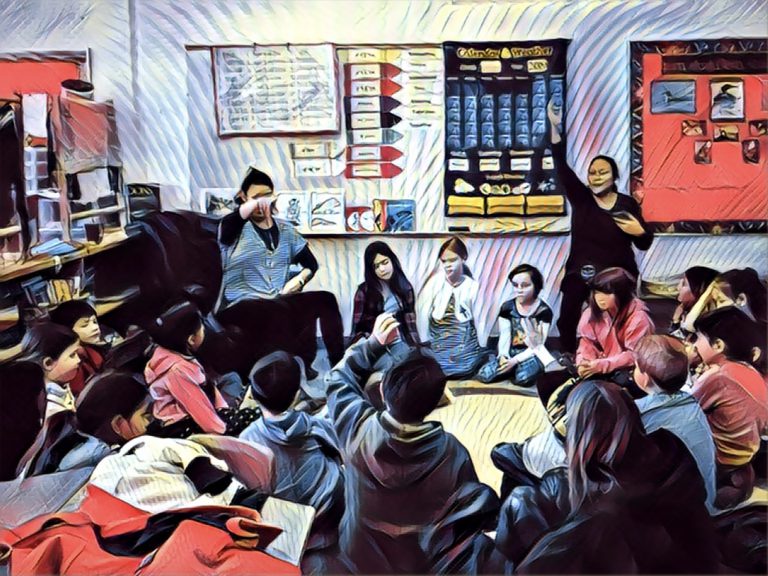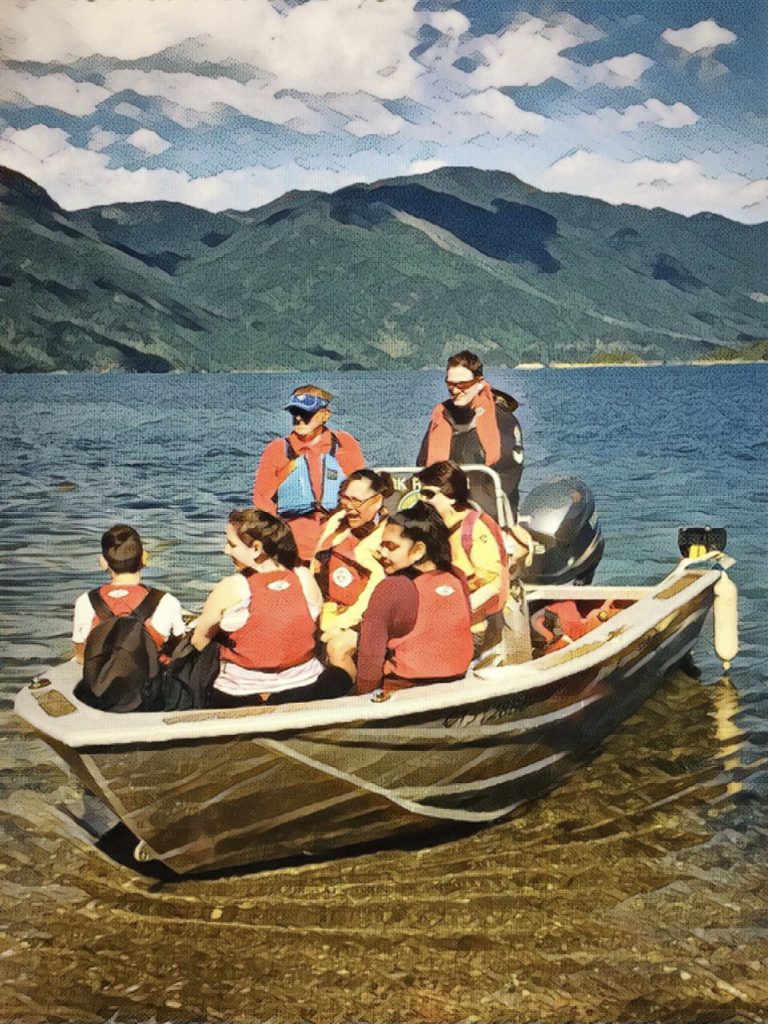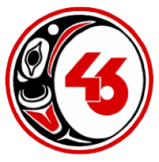She Shashishalhem Language and Culture

“Language is the cedar canoe which carries culture and healthy ways of living for its people. We all must work together to make sure the precious things we carry in this canoe are delivered to the next generation as intact as possible. In this way, we give our greatest gift to our children, their children, and the generations to come – we give them who we have been and who we are now – and we give them hope for a good life in the future.”
The Late Elder Violet Jackson

At the request of a young shíshálh student, and with the support of Chief and Council, the Elders, and the School District, She Sháshishálhem was introduced as a school-based language program in Sechelt Elementary during the 1990’s and has developed substantial momentum since then. The language continues to be taught at Mom Ay Mon, Kinnikinnick, Chatelech, the Alternative School, and Capilano University.
Ø The work done by the Elders and other individuals/committees, in partnership with the school district, provided the foundation for the provincially approved 2001 curriculum for: Sháshishálhem 5 to 12 and Introductory Sháshishálhem 11. We recognize the incredible amount of work of the Late Donna Joe to develop provincially recognized curriculum.
Ø Sháshishálhem is recognized by the Ministry of Education as an Indigenous Language – and can be taken for credit equivalent to French or any other Second Language or Foreign Language requirement for graduation.
Ø Sháshishálhem is recognized as a Language credit at many post-secondary institutions in BC. In October, 2017, UBC announced that a Grade 12 Indigenous Language credit, including She Sháshishálhem, will be considered one of four Grade 12 courses for Indigenous students’ minimum requirement for admission.
Ø SD46 and the She Sháshishálhem program has received grants from the Ministry of Education to support research into the foundational elements of Indigenous Language Learning. Language teachers and the shíshálh Elders have discussed how learners best acquire their traditional language. The result was the identification of the Houseposts that hold up She Sháshishálhem learning. Rita Poulsen and Kerry Mahlman have been involved in the development of the provincial framework for Indigenous Language Learning.
Ø The Sháshishálhem program at Chatelech, in partnership with the Sechelt Arts Festival, received a Canada 150 grant for the SYIYAYA Project. Sháshishálhem students spent time with dear shíshálh Elders to do “story catching” – where students interviewed Elders to gain deeper understanding of shíshálh history, culture and language. This included a display of student work at the Seaside Centre and their stories featured in the SIYAYA theatrical presentation on in October, 2017.
Ø Language students have been and will continue to visit elementary and secondary schools in the district to share their language and culture. The students and language staff are also engaged in doing welcomings and introductions in the language at school district events. This provides authentic context for using the language.

LEARNING STRATEGIES
The She Sháshishálhem curriculum uses what is commonly referred to as the communicative-experiential approach. In this approach, the focus of instruction is the purposeful use of language to perform real-life tasks, share ideas, acquire information, and get things done. Grammar instruction plays a supportive role only—to provide useful strategies to facilitate communication and comprehension.
Guided by the wisdom of the shíshálh Elders, the communicative-experiential approach includes the following principles of language learning, or Houseposts:
As much as possible, language learning should happen while doing – it is a total physical response as much as an intellectual one.
The goal of language learning is speaking and listening to the language rather than knowledge about the language.
Language learning is paced differently at various stages of child development.
Language learning develops over time.
Language learning is not the accumulation of perfectly mastered elements of grammar and vocabulary. Thus, learner errors are to be expected.
Language proficiency involves both understanding and speaking. Understanding comes before speaking and writing.
Language is bound to culture. Language use requires an understanding of the cultural context.
Language learning is complex. Instruction takes into account individual learning styles and rates, and also uses teaching process strategies for successful language learning. Fluency is a life-long process and requires constant exposure and practice at home and in the community. The more the language is spoken at home and in the community, the better chance students will gain some fluency.
The ability to use language is facilitated when students actively engage in meaningful, authentic, and purposeful cultural and language-learning tasks.
Assessment reflects the instructional goals and strategies above.

